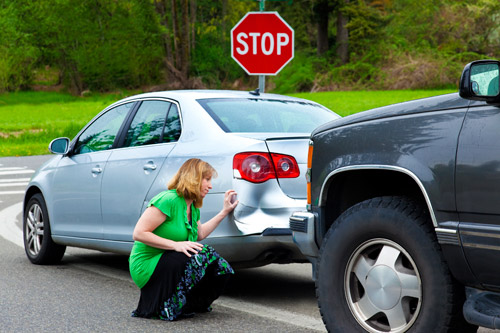Rear-end collisions are a problem throughout Louisiana, causing serious injuries and fatalities.
- A 42-year old man died near Hope, Arkansas when the vehicle he was driving was rear-ended and turned over.
- Two people were killed in a rear-end collision in West Baton Rouge Parish that involved high rates of speed.
- Two people suffered injuries when the vehicle they were riding in was rear-ended on the southbound Lake Pontchartrain Causeway in New Orleans.
Stories like this continue to fill our newspapers, online news outlets, and news programs. Rear-end crashes result in serious and traumatic injuries. Even a slow impact rear-end crash can result in permanent, life-long medical conditions.
If you have been injured in a New Orleans rear-end collision or a rear-end crash anywhere in Louisiana, contact the car accident attorneys at The Olinde Law Firm. Our personal injury attorneys have extensive experience handling vehicle accident claims. You do not need to struggle to pay medical bills that you are forced to incur because of a careless driver. We can help you get the compensation you deserve.
Automatic Emergency Braking (AEB) Systems
The United States Department of Transportation is attempting to improve the safety of those on the road by encouraging automakers to include automatic emergency braking (AEB) systems as standard equipment on all vehicle models beginning with 2018. Beginning with 2018 vehicle models, the National Highway Traffic Safety Administration (NHTSA) will not award its top safety award to a vehicle that does not have an AEB system as a part of its standard equipment package.
While the NHTSA’s 5-Star Rating is not something that is mandatory in the vehicle industry; however, a poor safety rating can drive consumers to another vehicle with a higher safety rating, especially parents searching for a vehicle for their family.
What is an AEB System?
AEB (automatic emergency braking) systems, also known as forward collision avoidance technology, have been shown to be effective in the prevention of rear-end collisions. The way an AEB system works is by using sensors, driver inputs, cameras, and radars to independently determine if a rear-end crash is imminent.
If the AEB system detects the potential for a rear-end collision, the system will alert the driver with an audible alarm. If the driver fails to respond by braking, the AEB will engage the vehicle’s brakes to help avoid a rear-end collision. Because almost a quarter of all vehicle crashes are due to some type of driver distraction, having an AEB system will help prevent rear-end collisions due to drivers failing to pay proper attention to the road in front of them.
AEB systems can also be very useful in preventing commercial truck crashes in heavy traffic. Navigating stop-and-go traffic can be challenging for a truck driver; however, an AEB system can help the driver avoid a rear-end collision during heavy traffic and in other situations. This could prevent some of the tragic commercial truck accidents that we see each day throughout the United States.
Have You Been Injured in a Rear-end Collision Accident?
Rear-end crashes are becoming more common as drivers are distracted, speeding, and driving recklessly. Until all automakers install AEB systems as standard equipment, we will continue to see these types of accidents on a frequent basis. Where there are car accidents, there are injuries. The auto accident attorneys of The Olinde Firm can help you receive the compensation you deserve if you have been injured in a car crash. Contact our office for a free case evaluation.

